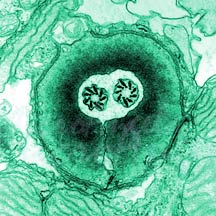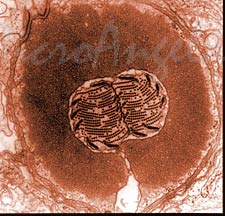
| 
|
Basal Bodies of Copepod Mechanosensory
Setae
Ciliary-based hair-like mechanoreceptors are found throughout
the animal kingdom. For example, the well-studied vertebrate ciliary
hair cell receptor features a prominent "kinocilium" with a 9 + 2
arrangement of microtubules, surrounded by non-ciliary hairs termed
"stereocilia". Arthropod setal receptors are ciliary in origin and
are characterized by microtubule-containing distal dendrites
surrounded by a structure composed of actin fibers called the
scolopale.
The copepod mechanosensory setae are characterized by a large
number of microtubules, arranged in bridged rows, which extend
far out into the setae and are well anchored at both the proximal
and distal ends. Other associated structures contribute to the
stiffness of the tube enclosing the dendrites, undoubtedly playing
a part in the exquisite sensitivity of these sensors.
Here's a link to some of our
references.






